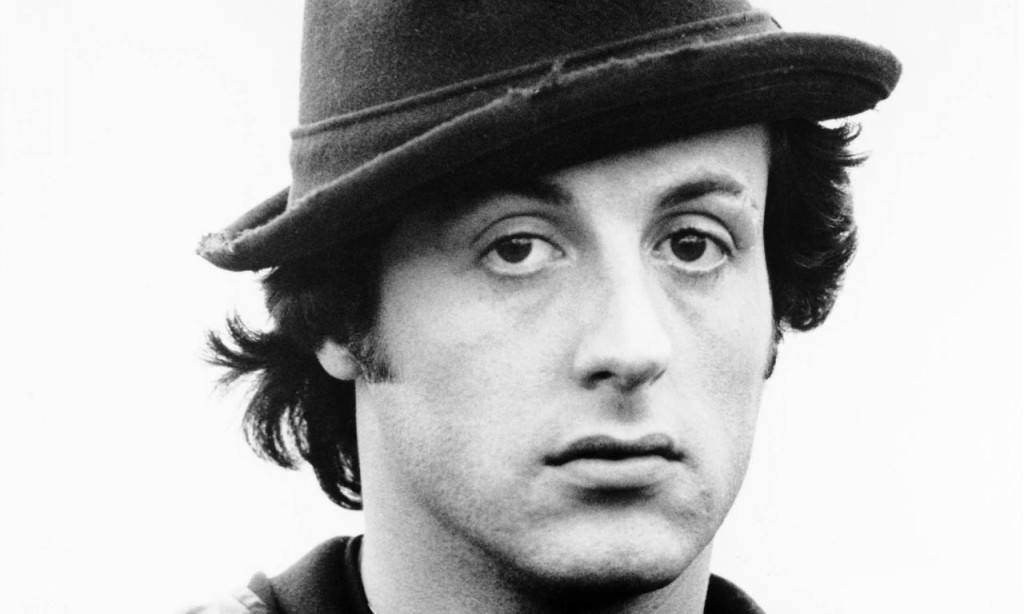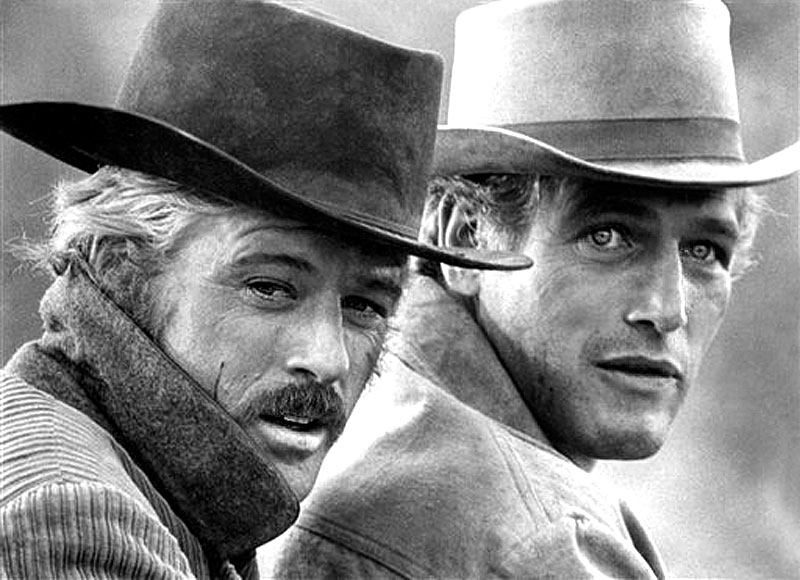 Now THAT’S a memorable character
Now THAT’S a memorable character
Last week, I talked about outlining your plot. This week, I’m going to talk about outlining your characters. The more scripts I read, the more I realize that the thing that separates the men from the boys is character. Characters with flaws, characters with backstory, characters who arc, characters with internal conflict, characters with interesting unresolved relationships. You can feel depth when a well crafted character steps on the page. When I read “Where Angels Die” last Friday, I FELT Parker. I FELT those other characters. The writer didn’t just write those guys on a whim. He (as well as the author of the book) got to know everything about those people. If you want to be a serious writer, you have to do the same. Being able to develop compelling characters is one of the easiest ways to carve out a career in the screenwriting business.
Which leads to the question – How do you do that? Well, I’m not going to lie to you. It isn’t easy. Character-building takes a LOT OF TIME. But it’s time well-spent, as it’s the difference between a character who feels made-up and a character who feels real. The more you know about your character, the more of a real-life-quality he takes on. Because in a way, he’ll start to become real, since he’ll have lived an entire imaginary life in your head. Some screenwriters balk at the idea of working so hard before writing a script. But I’m telling you from experience – Every time I’ve encountered thin characters, I’ve asked the writer how much effort he put into them, and he’s conceded “not much.” And every time I’ve encountered deep rich characters, I’ve asked the writer the same question and they say, “a ton.” So it WILL make a difference. But it requires commitment.
Unfortunately, character outlining isn’t as linear as plot outlining. You’re going to be building multiple documents here, one for each of the primary (and secondary) characters. So with that said, these are the three main things you’re going to want to focus on when character outlining.
1) Character Handprint
2) Character Backstory/bio
3) Character Relationships
CHARACTER HANDPRINT
This is what I consider to be the heart of your character. These are the things that define him, that you can always come back to whenever you’ve lost sight of your character. They’re important because they’re actually going to be coming up in the story (as opposed to the stuff in a character bio, which is all backstory). So create a file for each of your major characters, and start by writing these three things down.
a) Your character’s story goal – What does your character want in your screenplay? You need to know this because every choice he makes will be in service to this objective. Maybe he wants an ancient Ark (Raiders). Maybe he wants a girl (Notting Hill). Maybe he wants to get sober. Maybe he wants to not get killed by aliens (War Of The Worlds). Maybe he wants a life of freedom again (American Beauty). Know what your character wants as it will provide him with focus and clarity (never to be underestimated – I read so many scripts with unfocused unclear characters and they’re all a mess). And don’t just do this for your hero (which is the easiest story goal to figure out). Do it for ALL your characters! Find out what ALL of them want in the story.
b) Your character’s story motivation – What is the reason your character is pursuing the story goal? A character without a motivation will read false because we won’t understand why he’s doing anything. Also, a strong motivation is one of the easiest ways to create a strong character. Sometimes motivations are obvious (Tom Cruise’s character’s motivation in War of the Worlds is to survive). Other times they’re complex (Alonzo’s motivation in Training Day is to frame a rookie cop so he can score a big payday). You need to know why characters are doing things or else every decision they make comes off as false.
c) Your character’s flaw – Everybody’s got a flaw, something holding them back in life. Once you know a character’s flaw, you can create a journey that challenges it. Think of flaws as a one-sentence sound bite a person might use to describe someone else. My friend Jason’s flaw, for example, is that he never follows through with anything. My ex-girlfriend Kristin’s flaw is that she put everyone else above herself. An old co-worker, Doug, never put in the effort required to succeed at his dream. Think of anyone in your life. Chances are, you’re able to come up with a one-sentence sound bite that describes their weakness. This is actually a great way to find a flaw for your protagonist. Go through everyone you’ve known in life, find their defining flaw, and see if it fits your character. Once you have that, you can create a story that challenges the flaw. For example, with my ex-girlfriend, Kristin, I’d write a story where people are constantly taking advantage of her because of how selfless she is. She has to learn, by the end of the movie, how to say no and put herself first.
With these three things in hand, you have the core of your character at your fingertips. But that’s just the core. If you want to really know your character, you’re going to have to know everything about their life…
CHARACTER BACKSTORY/BIO
If you want to take the next step as a writer, you need to create character bios for your characters. This will suck. It will take a lot of time. It will feel like work instead of fun. But it’s the best way to add depth to your characters. So within the same document that you wrote your Character Handprint, you’ll now write up that character’s backstory, broken down from the day they were born to where they are now. The idea here is to write down all of their major life beats. Although it’s up to you how you want to do it, most writers simply write a character bio like they would a story. How long should these be? Some are five pages long. But I’ve seen them get up to twenty pages long. It all depends on how much you want to put into it. Cover anything you think is important, but here’s a cheat-sheet to help you along.
a) When your character was born.
b) Who his parents were (if they’re still alive/together).
c) Where they were born (this will inform their speech pattern and personality. Someone born on the streets of Philly will act and sound different from someone who grew up in the suburbs of Chicago).
d) What kind of person he was growing up (Popular? Outcast?).
e) What kind of school he went to.
f) Who his friends were.
g) Who his first girlfriend was (first kiss, first love, who he lost his virginity to).
h) Where he went to college.
i) His first, second, third jobs.
j) Anything else you’d consider a “major moment” in his life (i.e. loss of a friend, lost the big championship as a kid, a major car accident, jail time, period of being a drug addict).
The more specific you can get, the better. Knowing where your character went to college is one thing. Knowing if he got a full ride or paid with school loans could inform his current financial situation. If he’s still paying off those loans, he might be drowning in debt, which affects his mood, his disposition, his personality. He could be bitter that his expensive education didn’t amount to a more lucrative career. Do you see how the more you know, the more specific and REAL your character gets? Only a tiny fraction of this stuff gets into the script because it’s backstory. But it’s still important because it will inform the decisions your character makes, which is what will make him feel more real. And if you really really really want to know your characters well, use this questionnaire sheet. It’s not mine. It’s been on the web for awhile. But it’s SUPER SPECIFIC and forces you to get to know your character better than you know some of your best friends. Your character is going to be REALLY FUCKING DEEP if you fill this out.
CHARACTER RELATIONSHIPS
You definitely want to map out all the key relationships in your screenplay. And for a relationship to resonate, it should have a central conflict within it, something that’s unresolved. If there isn’t something that needs to be resolved, the relationship probably won’t be memorable. Think of relationships as the story that’s going on behind the story. Your hero battles orcs while searching for the gold. That’s the plot. But he may need his son as a guide, a son who’s never respected him after he deserted the family when our hero was a child. If you do it right, the audience will be more interested in the relationships getting resolved than the actual plot. Story relationships typically boil down to five types. They are…
a) family relationships
b) friendships
c) romantic relationships
d) work relationships
e) your hero’s relationship with the villain.
The typical screenplay will almost always contain the first three. One family relationship gone bad. One friendship that’s suffering. And finally, a romantic relationship that never seems to be on stable ground. Depending on the genre you’re writing, though (say you’re writing an action comedy like the upcoming, The Heat), the focus might very well be on the work relationship (Sandra Bullock needing to work with Melissa McCarthy). Whatever the relationship, your job in the outline is to identify what the unresolved issue is between the characters that needs to be fixed. It might be two cops who don’t respect the others’ work approach (The Heat). It might be a past love who’s run away with someone else and the hero wants her back (Great Gatsby). It might be a father desperately trying to get his daughter’s respect back (Taken).
You can map relationships out in two ways. You can create a document JUST for relationships, or, within each individual character document, include a section for that character’s key relationships. I prefer the latter because a relationship is different depending on whose perspective you’re telling it from. So say you’ve got Rocky and Paulie. On Rocky’s page, you’d describe the relationship as Rocky feeling loyalty towards Paulie and trying to help him. On Paulie’s page, however, you’d describe the friendship as more desperate. He needs Rocky because he doesn’t really have anyone else. Whatever the case, when writing a character bio, write out every character that character comes in contact with, and what the central conflict (or unresolved issue) is between them. Occasionally, there will be little or even no issues between two characters (there’s no conflict between Brad Pitt’s character and his wife in World War Z, for example). But usually, you’ll have something that needs to be fixed.
IN CONCLUSION
There are a lot of people who will tell you this stuff is overkill. And there are some instances where I’d agree with them. If you’re writing your first or second script, for example, getting into all this detail can be counterproductive. You haven’t even learned how to write a scene yet. Getting into who your character was 20 years ago will just be distracting. Once you get past those beginning stages though, you need to OBSESS over character. Because characters are the most memorable part of a movie. When we think of our favorite films, we think of the characters we loved in those films first and then the story. And I can practically guarantee that any timeless character you love wasn’t thought up on the fly. A lot of time and effort was put into making that character feel like a real person. That’s all you’re doing here when you outline. You’re getting to know the people in your story as well as you know yourself so you can write them as if they really exist. Most readers’ biggest complaint is thin characters. I’ve just given you a way to make sure that never happens. Take advantage of it!




